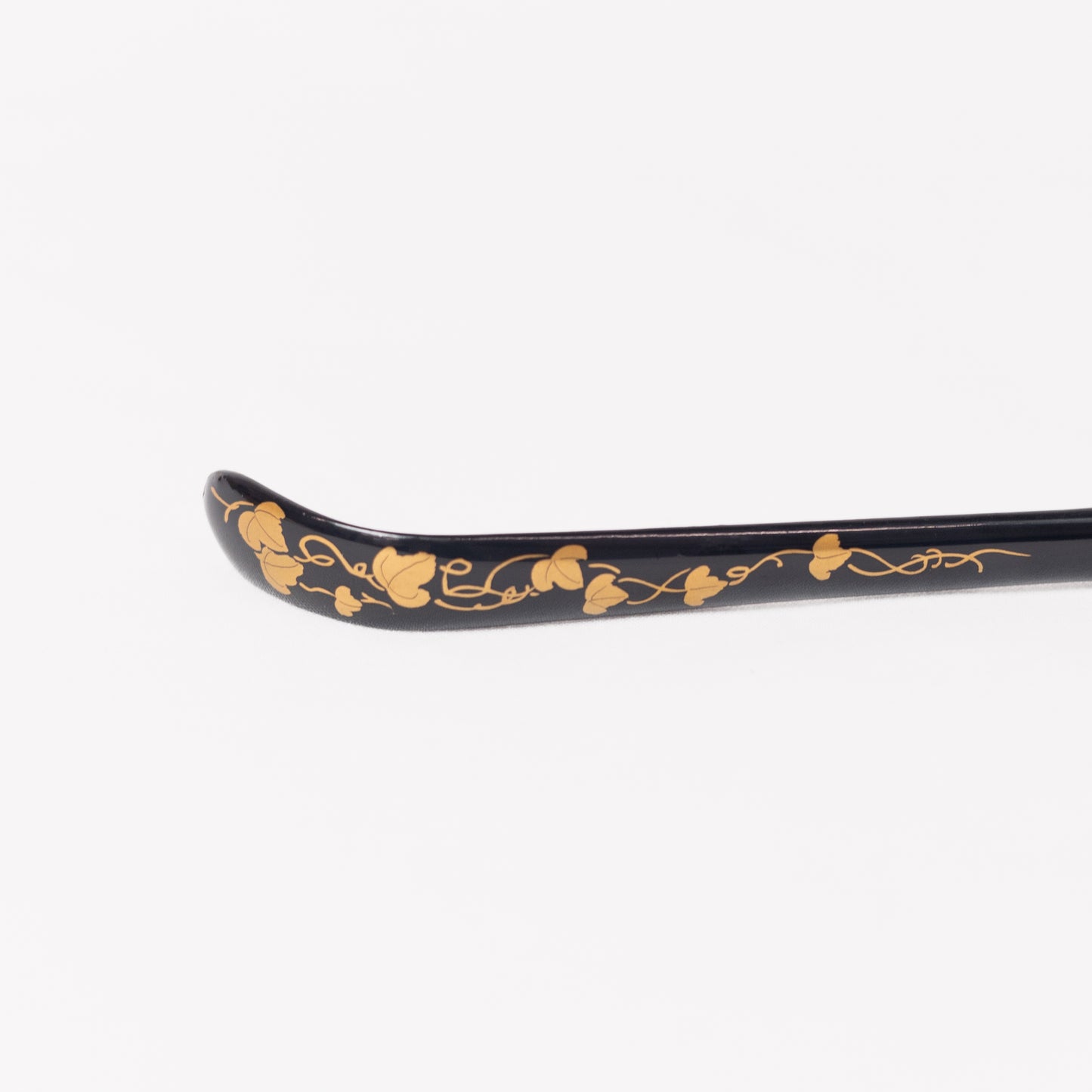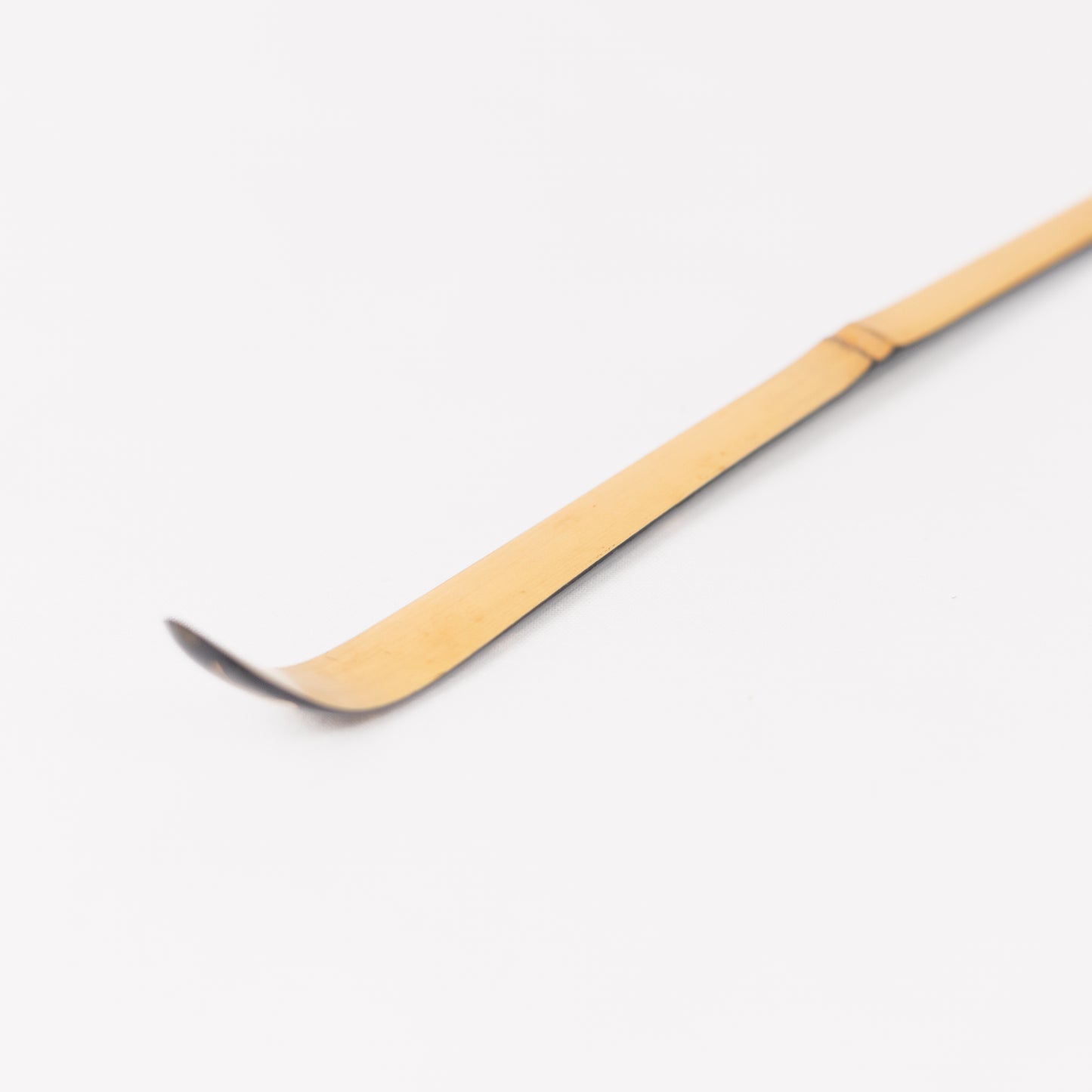Japan
Vintage - Maki-e Tea Scoop
Vintage - Maki-e Tea Scoop
Couldn't load pickup availability
Maki-e is a Japanese lacquer decoration technique in which pictures, patterns, and letters are drawn with lacquer on the surface of lacquerware, and then metal powder such as gold or silver is sprinkled and fixed on the surface of the lacquerware. The origin of the term maki-e is a compound word of maki meaning "sprinkling" and e meaning "picture" or "design". The term can also be used to refer to lacquerware made with this decorative technique. The term maki-e first appeared in the Heian period.
Jingyūsai was the twelfth head of the Senke school of tea ceremony, specifically within the Omotesenke branch. He was born in 1925 and passed away in 2010. Jingyūsai is celebrated for his profound understanding of tea ceremony traditions and his dedication to teaching and promoting the art of tea.
Under his leadership, he emphasized the importance of blending traditional practices with contemporary perspectives, making tea culture accessible and relevant. His writings and teachings are regarded as significant contributions to the field, encapsulating the philosophy and aesthetics of tea.
Jingyūsai's impact extended beyond Japan, as he played a vital role in fostering cultural exchange through tea ceremonies, helping to share the rich heritage of Japanese tea culture with a broader audience.
Details
- Size: 17.8 cm (7 in)
- Material: Bamboo
- Origin: Japan
- Author: Jingyūsai XII


Share












